Ramiro I was the son of King Vermudo I of Asturias. His father, who had ascended the throne in the year 788, did not last long in power. Three years after taking the crown he suffered a heavy defeat against the Muslims of Hisham I, son of Abderramán I, in Burbia. It is not very clear if this military failure convinced Vermudo that he was not fit to reign or if it was the notables of the kingdom who forced him to do so, but the fact is that in the year 791 Vermudo I abdicated and returned to monastic retirement. He died a few years later, in 797.
His son, Ramiro, was just a baby, so there was only one possible choice, especially in the hard times that Hisham's Arab expeditions had announced. The throne passed to Alfonso II, who would go down in history with the nickname "el Chaste", and who would be a fundamental turning point in the kingdom of Asturias (see collaboration dedicated to him in the magazine Discover History).
– The accession to the throne of Ramiro I
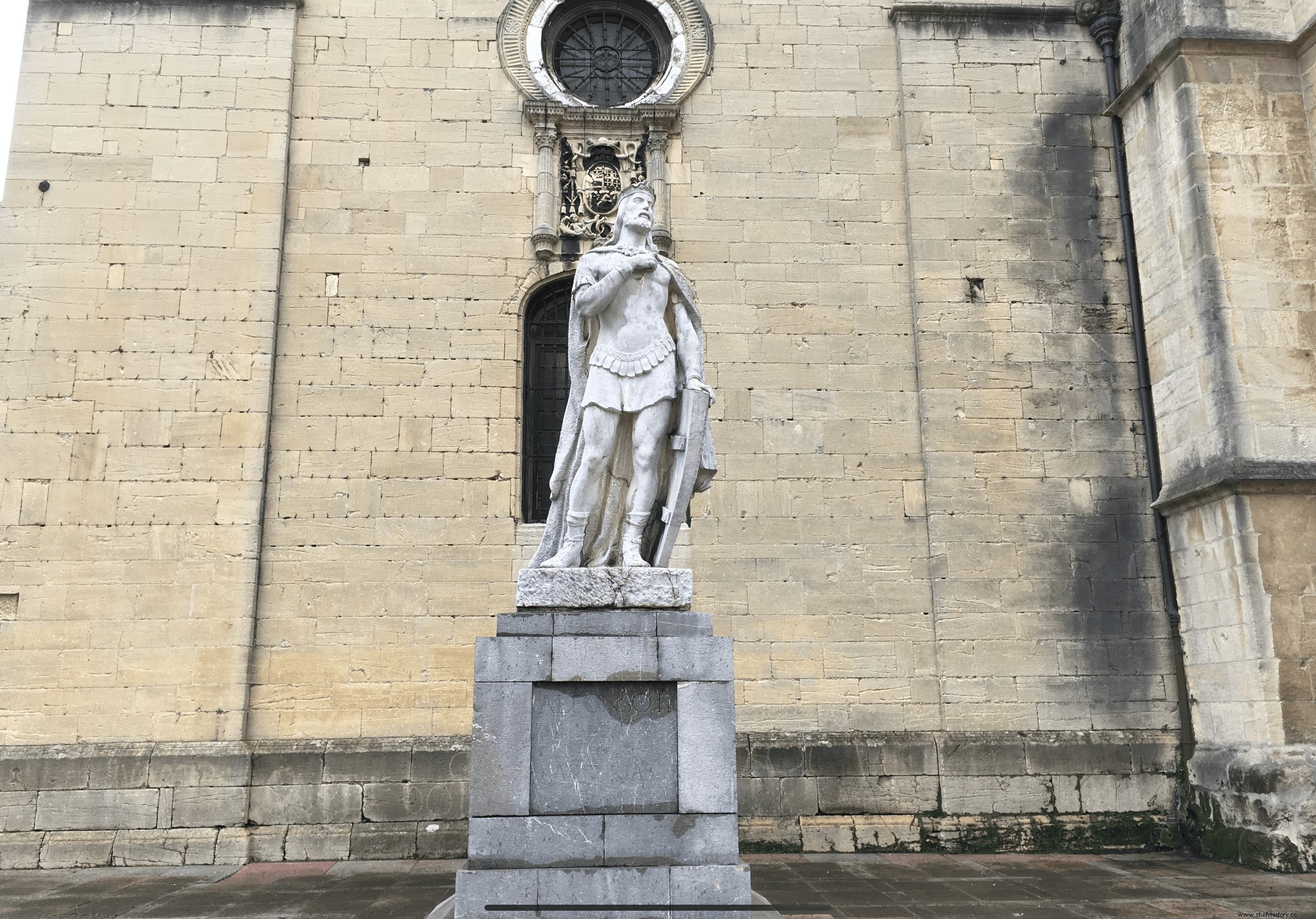
After more than fifty years of reign, he died without descendants Alfonso II el Casto, although the date, and even the year (842 or 843) of his death, is controversial. Some sources point to the possibility that, already during the last years of his reign, the future Ramiro I held some kind of responsibility at the head of the kingdom, pointing out two possibilities:the association to the throne by Alfonso II in the Visigothic style or the direct rule over some part of the kingdom, most likely Galicia. According to Cádiz Álvarez
A few documents dated to the period of the reign indicate Prince Ramiro I as “regnante”, raising doubts as to whether he had not waited for the death of Alfonso II or, perhaps, there was a regency or an association to the throne, citing even a period of government of Ramiro in Galicia. The documents, in any case, are late copies of possible originals […]. It makes us wonder if there was a coup by Ramiro, if they reigned together for a period, or reigned in different territories fighting for power.
– The imposition of the «Cantabrian branch» on the throne of Asturias
The reign of Ramiro I was relatively short (eight years) but very intense. After the death of Alfonso II he was appointed (or confirmed) as successor. The authors do not agree on what the relationship between Ramiro and Alfonso II must have been. For some, the relationship between the two was very friendly, since Alfonso owed his throne to Ramiro's father, Vermudo I, who had ceded it to him in the year 792. Sánchez Albornoz points out that "it was the Deacon King who gave (to Alfonso II ) step to the royal solium. And it is known that the Chaste King was grateful for such a gesture, living friendly with him (Ramiro) for many years».
Others, however, think that Alfonso's replacement on the throne of Vermudo was not so friendly, and that this was a cause of enmity between the Chaste King and Vermudo's son , and the attempts of various nobles (possibly sympathetic to the branch of descendants of Don Pelayo, extinguished with Alfonso II) to prevent the return to the throne of the branch from Fruela Pérez.
With the coronation of Ramiro I, the throne was consolidated to the descendants of Fruela Pérez against the extinct line of his brother Alfonso I and, therefore, of the first Asturian king Don Pelayo.
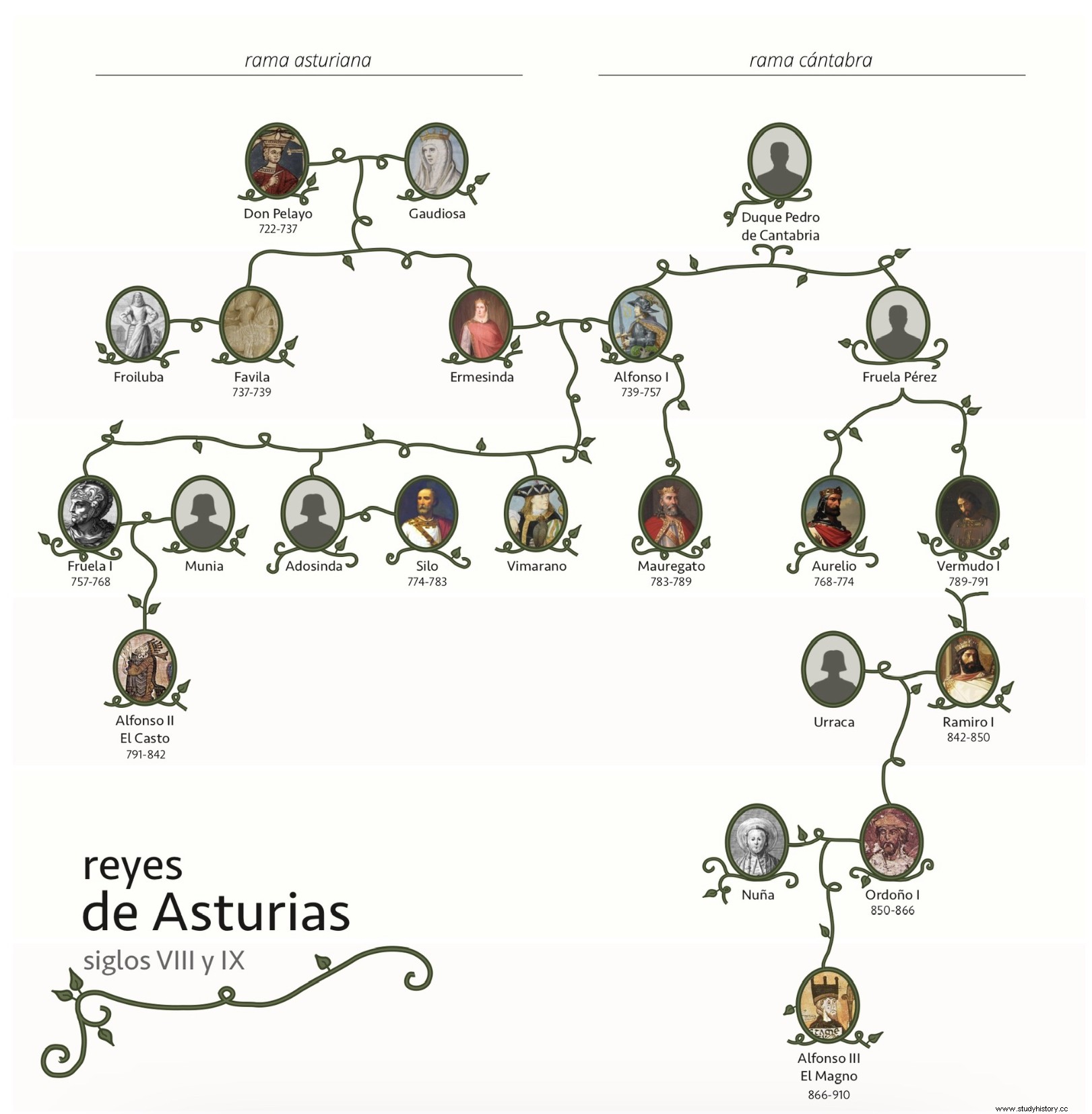
– The Nepocian Rebellion
Ramiro, who was in his fifties when Alfonso died, had been widowed by his first wife Urraca (who had given him a son, the future Ordoño I), so he had decided remarry. But when he left Oviedo to look for a wife in Bardulia, there was an attempt to seize power by a man named Nepociano, according to some sources brother-in-law of Alfonso II, although it was most likely some Basque relative of the mother of the deceased king. Nepociano was proclaimed king with the support of part of the Asturian and Basque nobility, and also of Castile, as can be deduced from the document of the claim presented to him by a certain Rebelio, which was resolved by Nepociano, whose opinion was obeyed. 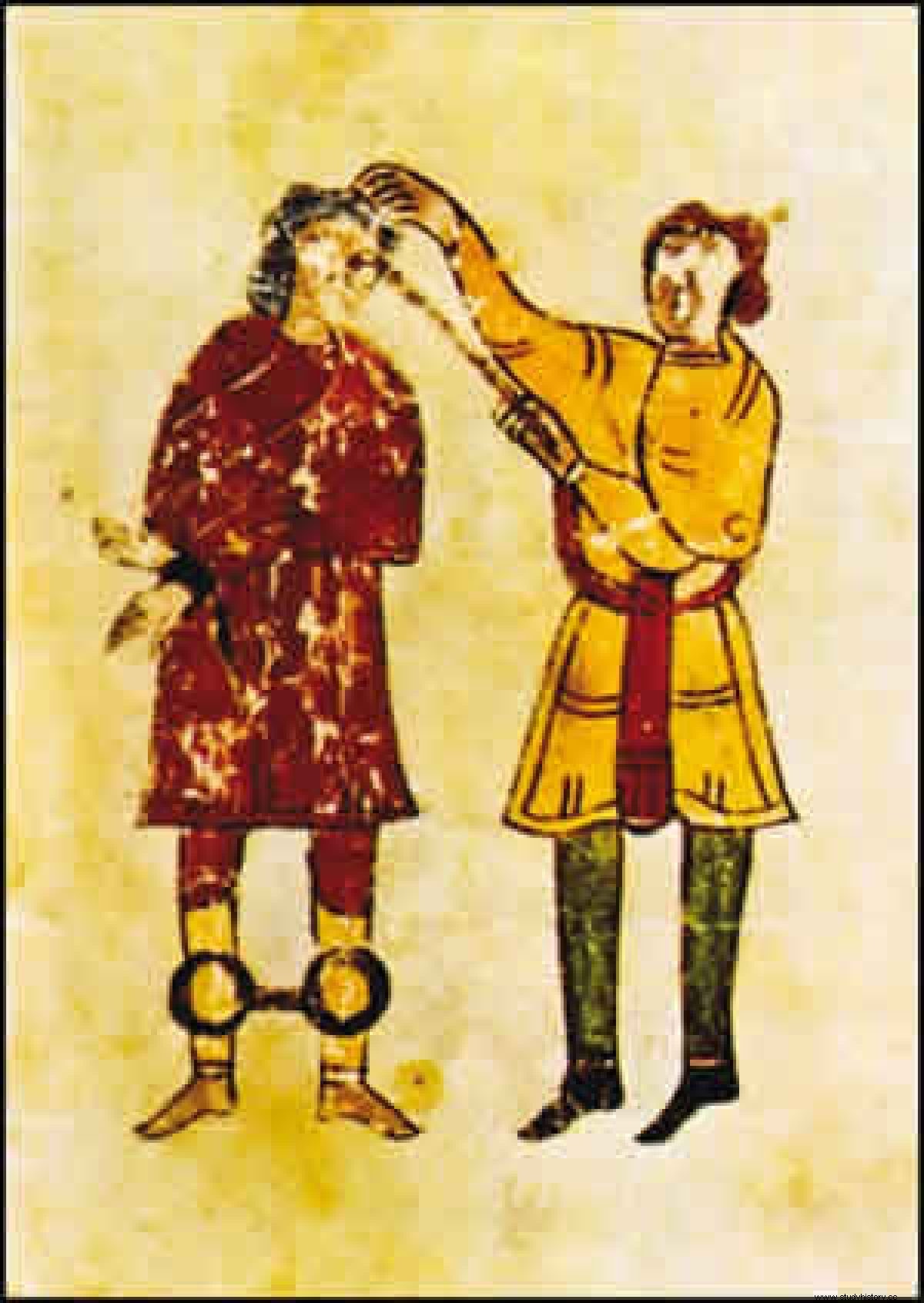
For his part, Ramiro sought help from the nobility Galician (that is why there are those who maintain, as we have seen, that it already ruled that area before the death of Alfonso II). Both armies clashed in the area of Cangas del Narcea and Nepociano was defeated, apparently because the army he had raised refused to fight for him. He fled from the battlefield, but was captured at Piloña, blinded, and locked up in a monastery. From there he continued to conspire for other nobles to fight for him, but they would be fiercely persecuted by Ramiro. There are those who cite Nepociano among the list of kings of Asturias.
The chronicles of the reign of Ramiro stand out:«He took out the eyes of the thieves and put an end, by fire, to the sorcerers. And he quickly subdued and exterminated those who tyrannically rebelled against him ». This last mention refers not only to Nepociano, but also to subsequent attempts by the counts Aldoroito and Piniolo to seize the throne, according to some versions with the support of Nepociano. Aldoroito followed the same fate as this one (he was blinded), but a much crueler fate awaited Piniolo:he and his seven children died by order of the king.
The mention of the witches in the chronicles surely refers to the priests who continued to practice the rites of pre-Roman pagan religions that would survive in Asturias, whom it seems that Ramiro ordered to be executed at the stake, although there are no details on the king's specific actions in such sense.
– The mythical battle of Clavijo
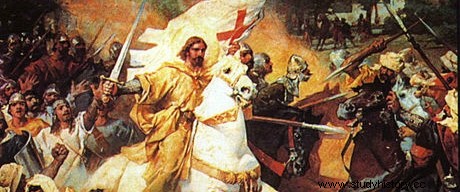
The Rotensian Chronicle narrates that «with the Saracens he had two wars, but with the help of God he always emerged victorious”, although the Arab sources do not refer to another different confrontation of an aceifa over León in the years 845-846 and another over Álava in the year 848 without stating the result. Later accounts date back to the year 844, in the area of La Rioja, a battle tinged with supernatural details whose veracity time has not only questioned, but also made it possible to affirm that it never took place in the terms in which it was narrated:the battle of Clavijo. According to a 12th century chronicle, it would be a confrontation in the Nájera area between Ramiro I and a huge Muslim contingent that forced the Asturian king to take refuge in Clavijo castle. There, according to legend, the apostle Santiago appeared to him announcing the victory of the army of the Asturian kingdom against the infidel and, riding his white horse, as Santiago Matamoros. In gratitude, the king instituted the so-called "voto de Santiago", which forced Christians to make a pilgrimage to Santiago de Compostela. It is not surprising that a mythical battle is attributed to the end of a no less mythical custom:the tribute of the hundred maidens.
– Viking attacks
During the reign of Ramiro I, a Norman (Viking) force landed, estimated by some sources at one hundred and fifteen ships and some five thousand men, first off the coast of Gijón (which they abandoned, it is not known whether because they had strong defenses or because what was found was of no interest to them) and then at the Brecantino lighthouse (La Coruña). Rejected there by Ramiro's army (it seems that the king was not present at the confrontation), the Normans headed south, to al-Andalus, first towards Lisbon and, later, after passing through Algeciras, they went up the Guadalquivir to Seville . There, they caused great damage for almost a month and a half, were rejected by the Muslims of Abderramán II in the battle of Tallades and returned to their lands, although a group of them, it seems, would have a curious end, since they settled in the area and dedicated themselves to livestock and cheese production.
– Jewels of pre-Romanesque art
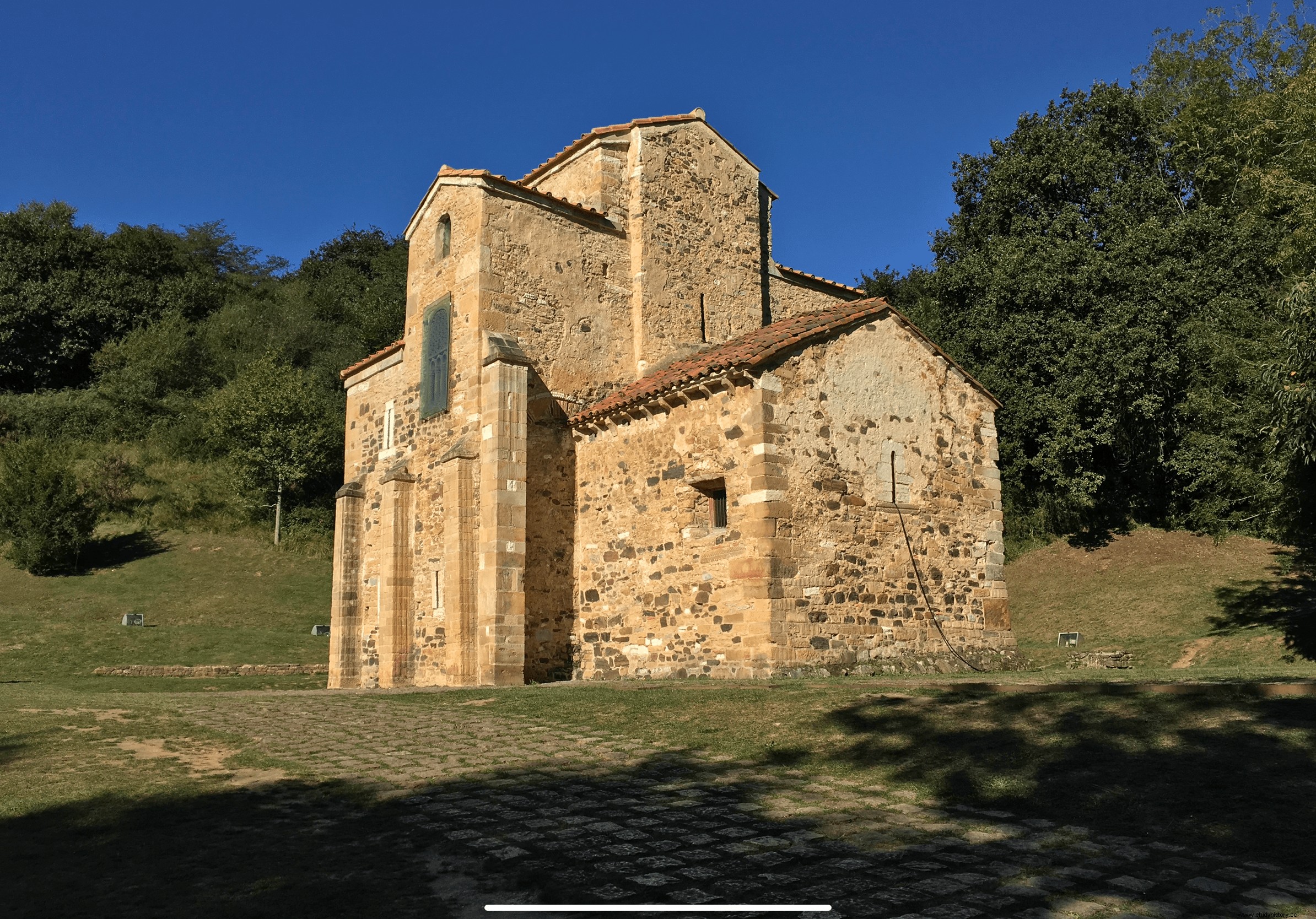
If the reign of Ramiro I stands out for anything, it is for the construction of great architectural works of the style known as pre-Romanesque, which in honor of this monarch is also called «Ramirense art ». These are Santa María del Naranco, built as a palace or for other non-religious purposes and later consecrated as a church, and the church of San Miguel de Lillo, in Oviedo. Some sources also attribute to him the construction of the church of Santa Cristina, in Pola de Lena, although most cite his son Ordoño I as the promoter of it.
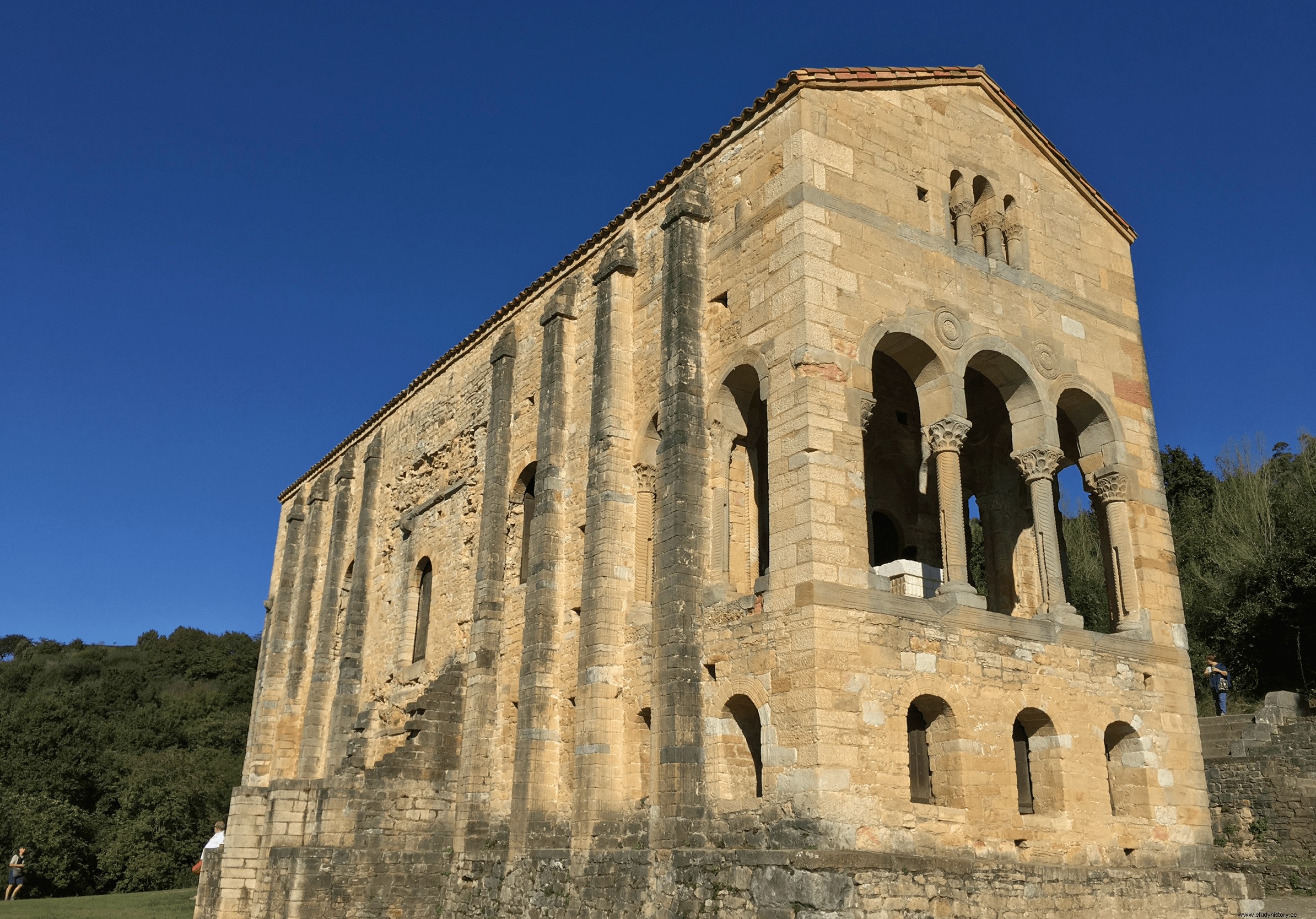
– Death and succession of Ramiro I
Ramiro I died in the year 850, after eight years of troubled reign, as we have seen. His death was followed by his son Ordoño I, whose reign would be plagued by clashes with various enemies... but that's another story.
Image| Wikimedia Commons, author archive.
